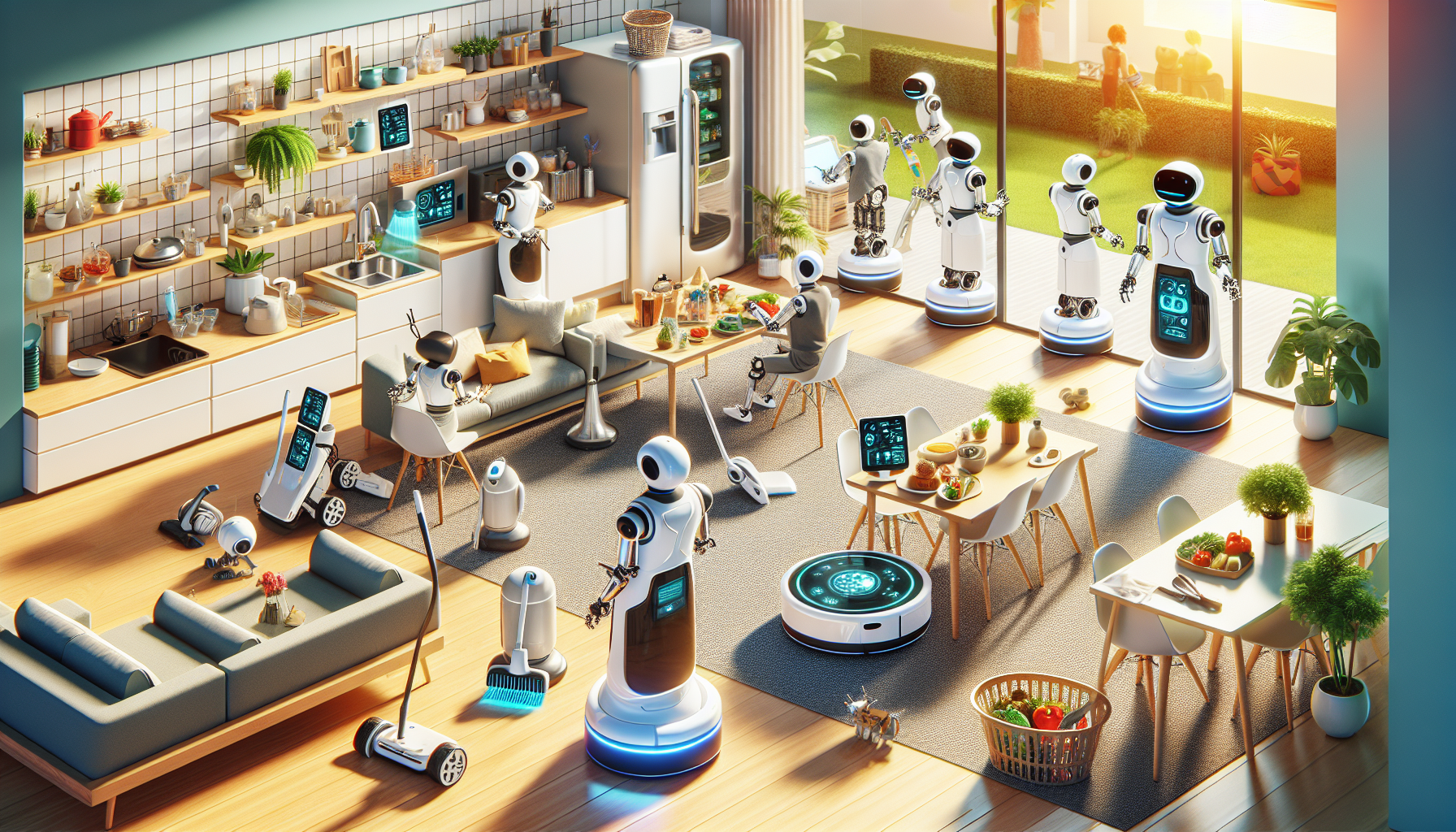The Rise of Robot Servants
In recent years, the rapid advancement of technology has paved the way for a new era of robotics in our daily lives. Robot servants, once the stuff of science fiction, have become tangible realities that are transforming how we manage our homes, workplaces, and even our social interactions. These intelligent machines are designed to assist in various tasks, making life easier and more efficient.
Understanding Robot Servants
Robot servants, or service robots, are machines designed to perform specific tasks that would typically require human effort. They come equipped with various sensors, artificial intelligence (AI), and often, machine learning capabilities. These attributes allow them to adapt to their environment and improve their performance over time.
Types of Robot Servants
Robot servants are categorized into several types based on their functionality. Here are some common types that are becoming increasingly popular in households and businesses alike.
Household Robots
Household robots include vacuum cleaners, lawn mowers, and even window cleaners. For example, robotic vacuum cleaners have gained immense popularity in residential settings. They can navigate around furniture, avoid obstacles, and adapt to different floor surfaces.
Companion Robots
Companion robots are designed to provide social interaction and companionship, particularly for the elderly or those with disabilities. They can engage in basic conversations, remind users of medication schedules, or simply provide company to reduce feelings of loneliness.
Industrial Robots
In industrial settings, robots are employed for tasks such as assembly, packaging, and quality control. These robots can operate tirelessly, providing precision and speed beyond human capabilities. As industries face labor shortages, the reliance on robotic assistance is growing.
Everyday Applications of Robot Servants
The integration of robot servants into everyday life is becoming increasingly common, and their impact can be seen in several areas.
Home Cleaning
The robotic vacuum cleaner is often the first experience people have with robot servants. Devices like the Roomba can autonomously clean floors, navigate around furniture, and return to their docking station when the job is done. Not only do they save time, but they also ensure a consistent level of cleanliness without requiring much input from users.
Gardening and Lawn Care
Robotic lawn mowers operate similarly to their indoor counterparts. They can maintain lawns with minimal human intervention. Equipped with sensors that detect boundaries, these robots can efficiently mow lawns while avoiding flower beds and other landscaping features.
Health Monitoring
Robot servants are also transforming healthcare. Some are equipped to monitor vital signs or assess the physical activity of their users. For individuals living alone or those with chronic conditions, these robots can alert caregivers about unusual health patterns, providing peace of mind for patients and their families.
The Benefits of Robot Servants
Increased Efficiency
One of the most significant advantages of robot servants is increased efficiency. They can handle repetitive tasks, freeing up time for individuals to focus on more meaningful activities, whether that is spending time with family, pursuing a hobby, or working on personal development.
Enhanced Quality of Life
For many, particularly the elderly or disabled, robot companions can offer increased independence. They can provide reminders for medications, keep users engaged through conversation, or help with basic tasks, ultimately improving users’ quality of life.
Cost Savings
While the initial investment in robotic technology can be considerable, the long-term cost savings can be significant. For instance, robotic systems in industrial settings reduce labor costs, minimize waste, and improve productivity. In the household, having robots assist with cleaning or yard work can relieve scheduling burdens and extend the time available for relaxation.
Challenges and Concerns
Despite the many benefits of robot servants, there are still challenges and concerns that need to be addressed.
Job Displacement
One significant concern with increasing automation is job displacement. As robot servants take over tasks traditionally performed by humans, there may be a reduction in employment opportunities, particularly in sectors like manufacturing and service. Finding a balance between leveraging robotic efficiency and ensuring job security for the workforce is essential.
Privacy Issues
Robot servants are often equipped with cameras and sensors, which raises questions about privacy. For example, a robot that monitors health or records activity in a home must also have safeguards to protect sensitive information and ensure data security. Users must trust that their data is not being misused.
Dependency on Technology
As we grow increasingly reliant on robot servants, there is a risk of becoming overly dependent on technology. This may lead to a decrease in manual skills, as well as the ability to perform tasks without robotic assistance. It is essential to maintain a balance in technology usage and retain fundamental life skills.
The Future of Robot Servants
Looking ahead, the future of robot servants appears promising. We are likely to see continued advancements in a range of areas.
Improved AI Capabilities
Artificial intelligence is continually evolving. As robots become smarter and more capable of understanding and predicting human needs, their usefulness will expand. Greater AI capabilities could lead to better decision-making and the ability to perform more complex tasks, making robot servants even more integrated into daily life.
Customization and Personalization
Future robot servants are expected to be highly customizable to suit individual preferences. Users may have the option to personalize their robots, enabling them to adapt to unique household layouts and specific user requirements.
Integration with Smart Homes
As smart home technology becomes more mainstream, robot servants will likely integrate seamlessly with other smart devices, creating a more cohesive living environment. Imagine a home where your robot vacuum cleaner, refrigerator, and lighting system communicate with each other to optimize energy usage and enhance comfort.
In summary, robot servants are not just changing how we handle everyday tasks; they are reshaping our lifestyles, enhancing our quality of life, and influencing how we interact with technology and each other. As advancements continue, the role of these helpful robots is bound to expand, ushering in a future that relies on their assistance in ways we are only beginning to comprehend.
